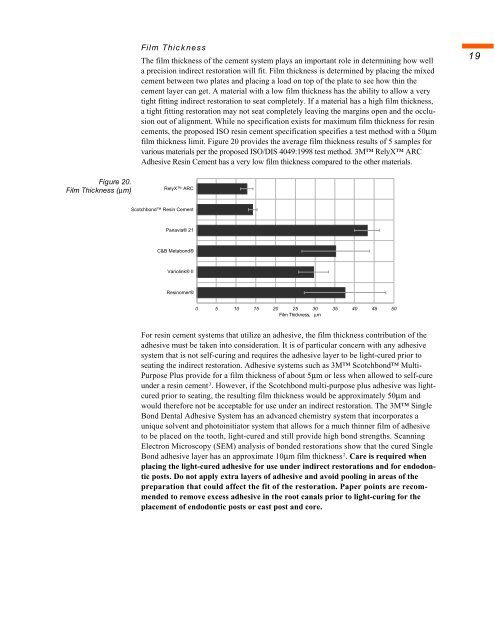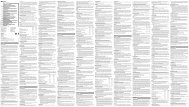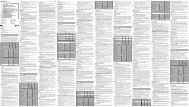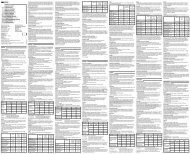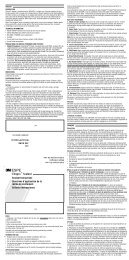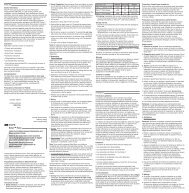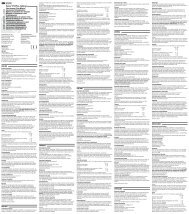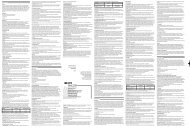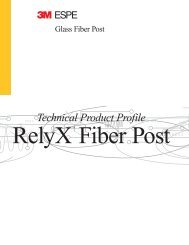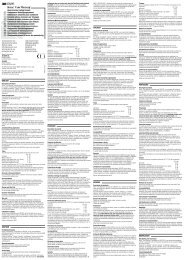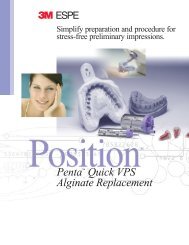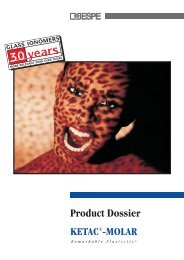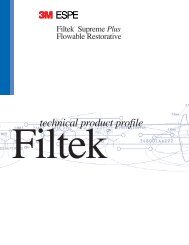RelyX⢠ARC Adhesive Resin Cement - Dale Dental
RelyX⢠ARC Adhesive Resin Cement - Dale Dental
RelyX⢠ARC Adhesive Resin Cement - Dale Dental
Create successful ePaper yourself
Turn your PDF publications into a flip-book with our unique Google optimized e-Paper software.
Film Thickness<br />
The film thickness of the cement system plays an important role in determining how well<br />
a precision indirect restoration will fit. Film thickness is determined by placing the mixed<br />
cement between two plates and placing a load on top of the plate to see how thin the<br />
cement layer can get. A material with a low film thickness has the ability to allow a very<br />
tight fitting indirect restoration to seat completely. If a material has a high film thickness,<br />
a tight fitting restoration may not seat completely leaving the margins open and the occlusion<br />
out of alignment. While no specification exists for maximum film thickness for resin<br />
cements, the proposed ISO resin cement specification specifies a test method with a 50µm<br />
film thickness limit. Figure 20 provides the average film thickness results of 5 samples for<br />
various materials per the proposed ISO/DIS 4049:1998 test method. 3M RelyX <strong>ARC</strong><br />
<strong>Adhesive</strong> <strong>Resin</strong> <strong>Cement</strong> has a very low film thickness compared to the other materials.<br />
19<br />
Figure 20.<br />
Film Thickness (µm)<br />
RelyX <strong>ARC</strong><br />
Scotchbond <strong>Resin</strong> <strong>Cement</strong><br />
Panavia® 21<br />
C&B Metabond®<br />
Variolink® II<br />
<strong>Resin</strong>omer®<br />
0 5 10 15 20 25 30 35 40 45 50<br />
Film Thickness, µm<br />
For resin cement systems that utilize an adhesive, the film thickness contribution of the<br />
adhesive must be taken into consideration. It is of particular concern with any adhesive<br />
system that is not self-curing and requires the adhesive layer to be light-cured prior to<br />
seating the indirect restoration. <strong>Adhesive</strong> systems such as 3M Scotchbond Multi-<br />
Purpose Plus provide for a film thickness of about 5µm or less when allowed to self-cure<br />
under a resin cement 3 . However, if the Scotchbond multi-purpose plus adhesive was lightcured<br />
prior to seating, the resulting film thickness would be approximately 50µm and<br />
would therefore not be acceptable for use under an indirect restoration. The 3M Single<br />
Bond <strong>Dental</strong> <strong>Adhesive</strong> System has an advanced chemistry system that incorporates a<br />
unique solvent and photoinitiator system that allows for a much thinner film of adhesive<br />
to be placed on the tooth, light-cured and still provide high bond strengths. Scanning<br />
Electron Microscopy (SEM) analysis of bonded restorations show that the cured Single<br />
Bond adhesive layer has an approximate 10µm film thickness 2 . Care is required when<br />
placing the light-cured adhesive for use under indirect restorations and for endodontic<br />
posts. Do not apply extra layers of adhesive and avoid pooling in areas of the<br />
preparation that could affect the fit of the restoration. Paper points are recommended<br />
to remove excess adhesive in the root canals prior to light-curing for the<br />
placement of endodontic posts or cast post and core.


